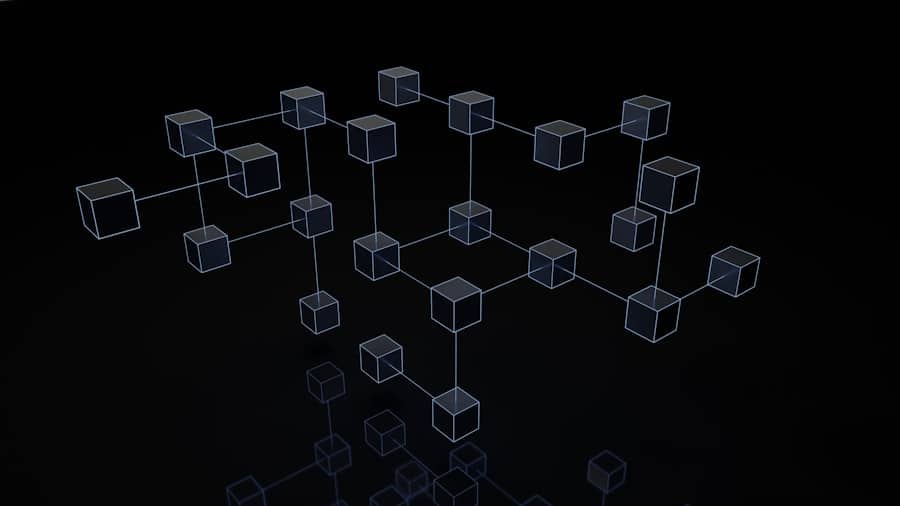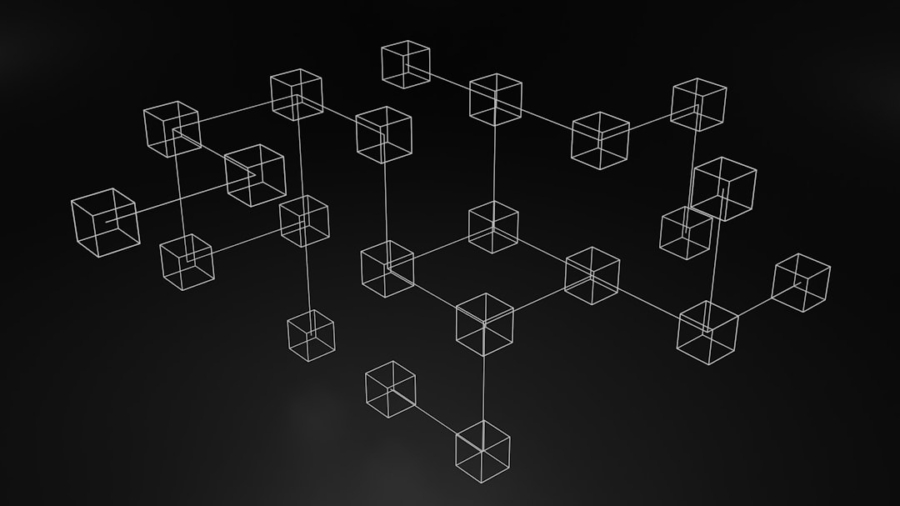Blockchain is a revolutionary technology that has garnered significant attention since the advent of Bitcoin in 2009. At its core, blockchain is a decentralized digital ledger that records transactions across multiple computers in such a way that the registered transactions cannot be altered retroactively. This ensures a high level of security and transparency, as every participant in the network has access to the same information.
The term “blockchain” derives from the structure of the data it stores: transactions are grouped together in blocks, which are then linked or “chained” to one another in chronological order. The decentralized nature of blockchain means that it operates without a central authority, which is a stark contrast to traditional databases managed by a single entity. This decentralization is achieved through a network of nodes, each of which maintains a copy of the entire blockchain.
When a new transaction occurs, it is broadcast to all nodes, and they work collaboratively to validate and record it. This process not only enhances security but also fosters trust among participants, as no single party has control over the entire system. The implications of blockchain technology extend far beyond cryptocurrencies; it has the potential to transform various industries, including finance, supply chain management, healthcare, and more.
Key Takeaways
- Blockchain is a decentralized, distributed ledger technology that records transactions across multiple computers in a secure and transparent manner.
- Blockchain works by creating a chain of blocks that contain transaction data, which is verified and added to the chain through a consensus mechanism.
- The benefits of blockchain technology include increased transparency, security, efficiency, and reduced costs in various industries such as finance, supply chain, and healthcare.
- Common misconceptions about blockchain include its association only with cryptocurrencies, its vulnerability to hacking, and its lack of scalability.
- Understanding blockchain through interactive tools can help individuals and businesses grasp the concept and potential applications of the technology.
How Does Blockchain Work?
The operational mechanics of blockchain can be understood through its fundamental components: blocks, chains, and consensus mechanisms.
This structure ensures that once a block is added to the chain, it cannot be altered without altering all subsequent blocks, which would require consensus from the majority of the network.
This cryptographic linking is what provides blockchain with its security and integrity. Consensus mechanisms are critical to the functioning of blockchain networks. They are protocols that ensure all nodes agree on the validity of transactions before they are added to the blockchain.
The most well-known consensus mechanism is Proof of Work (PoW), used by Bitcoin, where miners solve complex mathematical problems to validate transactions and create new blocks. However, PoW is energy-intensive and has led to the exploration of alternative mechanisms such as Proof of Stake (PoS), where validators are chosen based on the number of coins they hold and are willing to “stake” as collateral. These mechanisms not only secure the network but also incentivize participants to act honestly, as malicious behavior can lead to financial loss.
The Benefits of Blockchain Technology

One of the most significant advantages of blockchain technology is its ability to enhance transparency. In traditional systems, transactions are often opaque, with limited visibility for stakeholders. Blockchain provides a public ledger where all transactions are recorded and can be viewed by anyone with access to the network.
This transparency can help reduce fraud and corruption, as all actions are traceable and verifiable. Another key benefit is increased security. The decentralized nature of blockchain means that there is no single point of failure; even if one node is compromised, the integrity of the entire network remains intact.
Additionally, the use of cryptographic techniques ensures that data is secure from unauthorized access and tampering. This level of security is particularly valuable in industries such as finance and healthcare, where sensitive information must be protected. Moreover, blockchain can significantly reduce costs associated with intermediaries.
In traditional financial transactions, banks and payment processors often charge fees for their services. By eliminating these intermediaries, blockchain can facilitate peer-to-peer transactions with lower costs and faster processing times. This efficiency can lead to new business models and opportunities for innovation across various sectors.
Common Misconceptions about Blockchain
Despite its growing popularity, several misconceptions about blockchain persist. One prevalent myth is that blockchain technology is synonymous with cryptocurrencies like Bitcoin. While cryptocurrencies utilize blockchain as their underlying technology, blockchain itself is a versatile tool that can be applied in numerous contexts beyond digital currencies.
For instance, supply chain management can leverage blockchain for tracking goods from production to delivery, ensuring authenticity and reducing fraud. Another common misconception is that blockchain guarantees complete anonymity. While it is true that transactions on public blockchains do not reveal personal identities directly, they are still traceable through unique wallet addresses.
This means that while users may not be identifiable by name, their transaction history can be analyzed and linked back to them through various means. In contrast, private blockchains may offer more control over data privacy but sacrifice some degree of transparency. Additionally, many believe that once a transaction is recorded on the blockchain, it cannot be changed or deleted.
While it is true that altering past transactions is extremely difficult due to the cryptographic linking of blocks, it is not entirely impossible under certain circumstances—such as when a majority of nodes collude in a private blockchain scenario. Understanding these nuances is crucial for anyone looking to engage with blockchain technology effectively.
Understanding Blockchain through Interactive Tools
To grasp the complexities of blockchain technology fully, interactive tools can provide invaluable insights. Platforms like Ethereum allow users to experiment with smart contracts—self-executing contracts with the terms directly written into code—enabling individuals to see firsthand how decentralized applications (dApps) function on a blockchain network. These tools often come with user-friendly interfaces that simplify the process of creating and deploying smart contracts without requiring extensive programming knowledge.
Moreover, educational platforms such as CryptoZombies offer gamified learning experiences where users can build their own blockchain-based games while learning about Solidity—the programming language used for Ethereum smart contracts. Such interactive resources not only demystify blockchain concepts but also empower users to engage with the technology actively. By providing hands-on experience, these tools help bridge the gap between theoretical knowledge and practical application.
In addition to coding platforms, visualization tools like Block Explorers allow users to track real-time transactions on various blockchains. These tools provide insights into transaction volumes, block confirmations, and wallet balances, making it easier for individuals to understand how data flows within a blockchain network. By engaging with these interactive resources, users can develop a more profound understanding of blockchain’s potential applications and implications.
How to Get Started with Blockchain

For those interested in diving into the world of blockchain technology, there are several pathways to consider. First and foremost, gaining foundational knowledge through online courses or tutorials can provide essential insights into how blockchain works and its various applications. Platforms like Coursera and Udemy offer courses ranging from introductory overviews to advanced programming tutorials focused on specific blockchain platforms like Ethereum or Hyperledger.
Once foundational knowledge is established, aspiring developers can begin experimenting with coding smart contracts or building decentralized applications (dApps). Familiarity with programming languages such as JavaScript or Python can be beneficial when learning Solidity or other blockchain-specific languages. Engaging with open-source projects on platforms like GitHub can also provide practical experience while contributing to real-world applications.
Networking within the blockchain community is another crucial step for those looking to establish themselves in this field. Attending conferences, meetups, or webinars can facilitate connections with industry professionals and fellow enthusiasts who share similar interests. Online forums such as Reddit or specialized Discord channels can also serve as valuable resources for asking questions and sharing knowledge.
Blockchain Security and Privacy
Security and privacy are paramount concerns in any technological landscape, and blockchain is no exception. The decentralized nature of blockchain inherently enhances security by distributing data across multiple nodes rather than storing it in a single location vulnerable to attacks. However, this does not mean that blockchains are immune to threats; vulnerabilities can still arise from poorly designed smart contracts or flaws in consensus mechanisms.
Cryptographic techniques play a vital role in securing data on blockchains. Public-key cryptography allows users to generate unique cryptographic keys for signing transactions securely. This ensures that only authorized parties can initiate transactions while maintaining data integrity throughout the process.
Additionally, hashing algorithms like SHA-256 create unique digital fingerprints for each block, making it nearly impossible for malicious actors to alter past transactions without detection. Privacy concerns also arise in public blockchains where transaction details are visible to all participants. While pseudonymous addresses provide some level of anonymity, they do not guarantee complete privacy.
Solutions such as zero-knowledge proofs are being developed to enhance privacy on public blockchains by allowing one party to prove possession of certain information without revealing the information itself. These advancements aim to strike a balance between transparency and privacy in blockchain applications.
The Future of Blockchain Technology
The future of blockchain technology appears promising as it continues to evolve and find applications across various sectors. One area poised for significant growth is decentralized finance (DeFi), which leverages blockchain to create financial systems without traditional intermediaries like banks or brokers. DeFi platforms enable users to lend, borrow, trade assets, and earn interest on their holdings—all facilitated by smart contracts on public blockchains like Ethereum.
Another exciting development is the integration of blockchain with emerging technologies such as artificial intelligence (AI) and the Internet of Things (IoT).
This synergy could lead to more efficient supply chains, enhanced data security in smart cities, and improved healthcare systems through secure patient data management.
As regulatory frameworks around blockchain continue to develop globally, businesses will likely see increased clarity regarding compliance requirements related to cryptocurrency transactions and data privacy laws. This regulatory evolution could foster greater adoption among enterprises hesitant about integrating blockchain into their operations due to legal uncertainties. In conclusion, while challenges remain—such as scalability issues and energy consumption—ongoing research and innovation within the blockchain space hold great potential for addressing these concerns.
As more organizations recognize the transformative power of this technology across industries ranging from finance to healthcare and beyond, we may witness an unprecedented shift toward decentralized systems that prioritize transparency, security, and efficiency in our increasingly digital world.
If you are interested in exploring the world of technology further, you may want to check out Unlock a New World of Possibilities with Samsung Galaxy Z Fold4. This article delves into the innovative features of the Samsung Galaxy Z Fold4 and how it is revolutionizing the smartphone industry. By understanding the latest advancements in technology, you can stay ahead of the curve and make informed decisions about your tech investments.
FAQs
What is blockchain?
Blockchain is a decentralized, distributed ledger technology that records transactions across multiple computers in a way that is secure, transparent, and tamper-proof.
How does blockchain work?
Blockchain works by creating a chain of blocks that contain transaction data. Each block is linked to the previous one, creating a secure and transparent record of all transactions.
What are the key features of blockchain?
Key features of blockchain include decentralization, transparency, immutability, and security. These features make blockchain a reliable and trustworthy technology for recording and verifying transactions.
What are some real-world applications of blockchain?
Blockchain has applications in various industries, including finance, supply chain management, healthcare, and voting systems. It can be used for secure and transparent record-keeping, identity verification, and smart contracts.
How can beginners understand blockchain with interactive tools?
Beginners can understand blockchain with interactive tools by using visualizations, simulations, and interactive tutorials that explain the concepts and mechanics of blockchain in a user-friendly and engaging way. These tools can help beginners grasp the fundamentals of blockchain technology.


